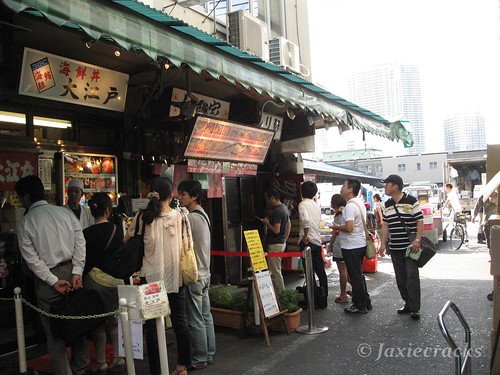
This picture doesn’t quite do the crowds justice, as the line breaks off after a certain amount of people, and continues around the corner.
Finding places to eat while travelling can be an interesting process. On the one hand, you want good food, which usually means following some kind of recommendation, whether from friends, friends of friends, guidebooks, online forums, etc. Often a few places rise above the pack and end up getting repeated by everyone – which presumably ends up being a testament to the quality of the place. On the other hand, I often question the real value of going to said "must-visit" places. Is this place REALLY so much better than the others? I have this perpetual instinct to try to find the "undiscovered" gems instead, rather than following the previously trodden path of so many others. At a crossroads, I’ll sometimes err on the side of risking a bad experience for the opportunity to stumble on an undiscovered gem, rather than following the crowdsourced advice of "tried and true".
Thus I was of a mixed mind about where to eat. On the one hand, I only had 48 hours in Tokyo, and precious little time (and stomach space) to waste on a so-so meal. On the other hand, I had heard that most of the places in the market were of fairly comparable quality, which seemed to resonate with me. I mean, they’re all getting their fish (purportedly) from essentially the same source (i.e., 20 yards away) – what could make them so different anyway? Ever the bargain hunter, I decided to eschew the long lines in front of the “biggies” in favor of finding a less-touristy, potentially cheaper option.
The sushi bars must be in collusion, though, as there didn’t seem to be a cheaper option to be had. Apparently using lower prices to draw more customers in isn’t the practice here. Despite the fact that almost every sushi place, save the biggies, was practically empty, they pretty much offered the same options: various set menus starting around 2100 yen (at the time I was traveling, about USD$25-30) and up. Suddenly my options seemed to be 1. wait in line with everyone else to have the iconic experience at Daiwa Sushi or Sushi Dai, or 2. take my chances on one of the other places that seemed essentially deserted.
Overwhelmed with indecision (as I am wont to do), I finally ducked into Ryu Sushi (i.e., not one of the “biggies”) on a whim.
I wish I could say that my gamble paid off. I wish that I could tell you to head over to this place on your next trip to Japan, rather than those too popular for their own good biggies. I wish I could say that the sushi set I ate made me feel like I had died and gone to heaven, and included the freshest fish I had ever tasted. Lord knows that’s the prescribed formula for most travel writing.
Like the time I got a free “student” haircut and ended up with much too short bangs instead of shelling out the cash for a real live professional stylist (now that I think about it, actually, I’ve done that twice…), however, my sushi experience was only kind of so-so. Truth be told, aside from the novelty of being in Japan, at Tsukiji, and not entirely able to communicate with my restaurant staff, the sushi I ate was fairly forgettable. While undoubtedly fresh (as in, I couldn’t smell anything off about it), most of the fish I ate was distinctly tough and chewy. Not the end-all, be-all of sushi eating that I had heard legends about.
Surprisingly, the most enjoyable parts of my breakfast involved eating things that I don't normally enjoy eating. Like eel.
Whether sliced in rounds and steamed with some soy sauce and ginger, or lathered with sauce and broiled in the form of unagi, I just don't like the texture or the taste of that snakelike sea creature. And yet the eel here was (here’s the travel writing formula kicking in again, though I say this without any exaggeration) a revelation to me. It melted in my mouth with just a hint of sweetness from its accompanying sauce, something slightly thicker and sweeter than soy, but definitely not the usual unagi iteration.
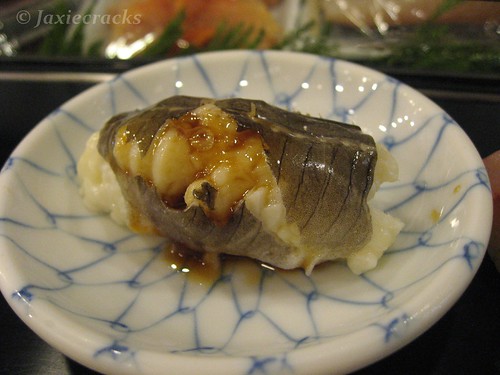
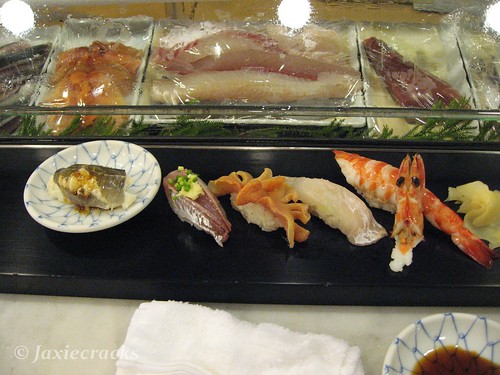
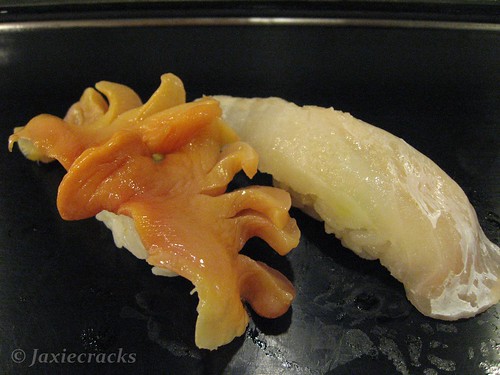
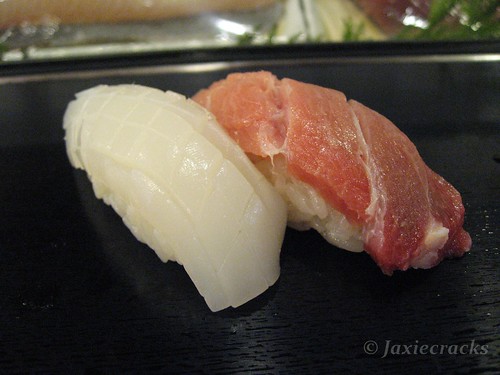
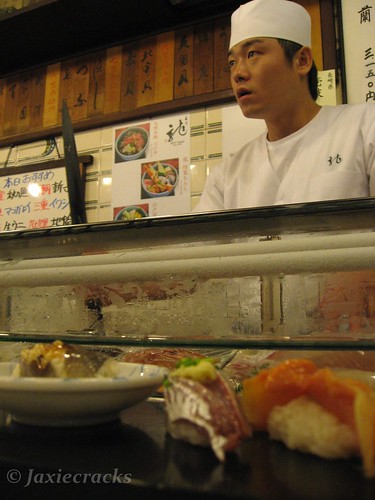
No comments:
Post a Comment